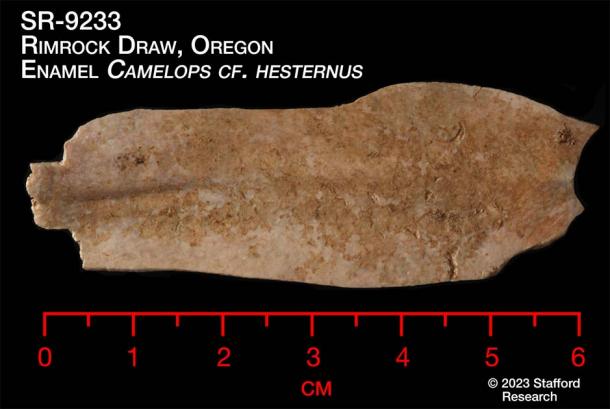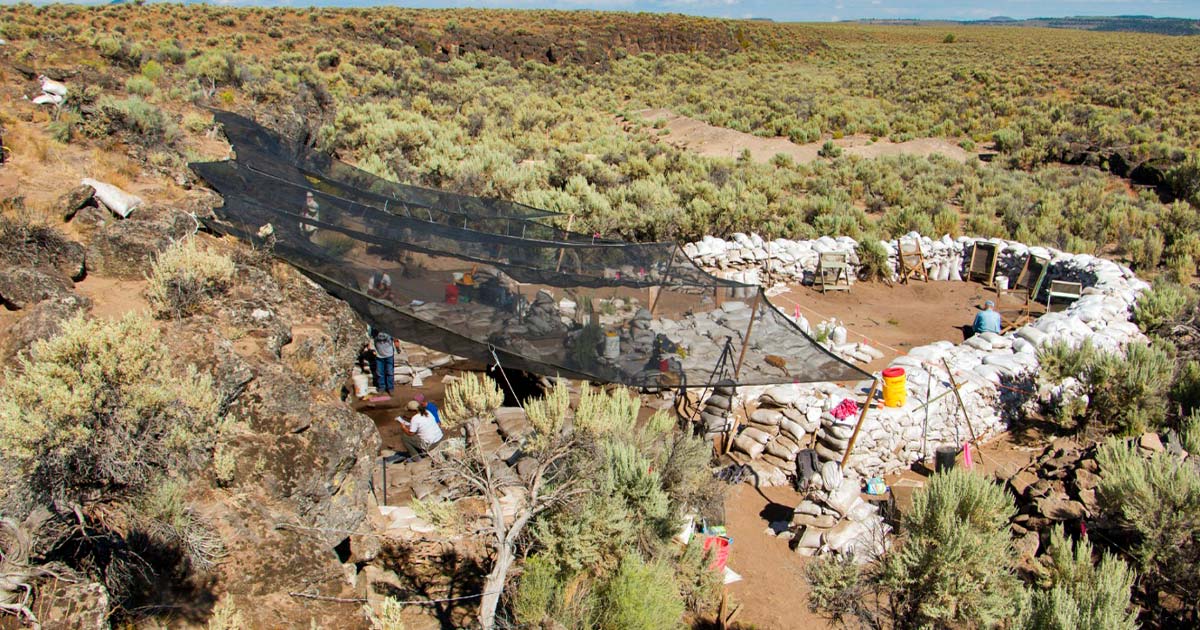18,000-Year-Old Oregon Rockshelter May Be Oldest North American Site of Human Occupation
In 2021, the Meadowcroft Rockshelter in Pennsylvania was identified as the oldest human occupational site in North America, dated to at least 16,000 radiocarbon years old, or 19,000 calendar years old. Now, that title might be usurped by Rimrock Draw Rockshelter, a close contender for the title, which is displaying evidence of occupation to at least 18,000 years ago! Analysis of blood residue on a scraper tool crafted by humans and extracted from the rockshelter in southeastern Oregon revealed the presence of animal proteins on the tool.
‘Magical Preservation’ at Rimrock Draw Rockshelter
Under an official partnership agreement with the Bureau of Land Management (BLM), archaeologist Patrick O'Grady from the University of Oregon’s Archaeological Field School and his colleagues have been conducting excavations at Rimrock Draw Rockshelter since 2011.
“It's not so much that we have such old dates, but that we're getting consistent results,” archaeologist Patrick O’Grady, who led the excavation, said. “This site is beautiful in that sense because … for the past 11 years, we're actually seeing something that's preserved through time that dates from about 7,000 years back to 18,000 years. And that's magic.”
- New Evidence Pushes Back Peopling of the Americas Almost 20,000 Years
- Stone tool unearthed in Oregon may date back 15,800 years or more

Archaeologists uncovered two orange agate scrapers, one in 2012 with preserved animal blood residue and another in 2015 which was buried deeper in ash at the Rimrock Draw Rockshelter. (courtesy of Bureau of Land Management Oregon and Washington)
Animal Protein of the Bison Antiquus: Pushing Back the Dates
According to a press release by the BLM, the animal species whose blood was found on the prehistoric tool of interest is believed to be Bison antiquus, an extinct ancestor of the present-day buffalo, that existed during the Pleistocene era.
The site has yielded several interesting finds – in 2012, camel teeth fragments were discovered under a layer of volcanic ash from the eruption of Mt. St. Helens, dated to 15,000 years ago. Two orange agate scrapers, one of which was found in 2012 with preserved bison blood residue, and the other in 2015, buried deeper in the ash, were also found.

Rimrock Draw Rockshelter camel enamel. (courtesy of University of Oregon)
“To me it's just a wonderful hunt,” Dr. Thomas W. Stafford, Jr. of Stafford Research said. “Now we're down to real excavations that are very controlled and good chemistry and good radiocarbon data. We're accumulating enough sites with good information that we can really say, ah, okay, it's a little bit older. It's a lot older.”
What’s interesting is that the “natural layering of the rockshelter sediment suggests the scrapers are older than both the volcanic ash and camel teeth” explained Briggs. Several rounds of radiocarbon dating and analysis revealed this date to be 18,250 years before present (BP). Further testing on the bison and camel teeth, as well as from plants found in the remains of cooking fires are currently underway, reports NBC Right Now.
“The identification of 15,000-year-old volcanic ash was a shock, then Tom’s 18,000-year-old dates on the enamel, with stone tools and flakes below were even more startling,” O’Grady said. All of these recent finds and studies have pointed to a fading away of the ‘Clovis hypothesis’, which for so long, held such pre-eminence in the occupation of Americas debate.
Offsetting the Clovis Hypothesis: Pushing Back the Clock
The Clovis Hypothesis, also known as the Clovis First model, is an archaeological theory that proposes that the Clovis culture represents the earliest human presence in the Americas. It suggests that the Clovis people, characterized by distinctive fluted stone projectile points, were the first to colonize the Americas around 13,000 to 12,600 years ago.
The hypothesis is named after the Clovis archaeological site in New Mexico, where the distinctive Clovis points were first identified in the 1930s. These points, with their characteristic fluting (a groove removed from both sides of the base), have been found at various sites across North America.
According to the Clovis Hypothesis, the Clovis people were believed to have crossed into North America from Siberia via a land bridge that connected present-day Alaska and northeastern Russia, known as Beringia, during the last Ice Age. From there, they would have migrated southward, eventually spreading throughout North and South America.
“This is a very exciting development for the archaeological community,” concluded Heather Ulrich, BLM Oregon/Washington Archaeology lead. “Thanks to the partnership with Dr. O’Grady and the University these new dates push our archaeological knowledge of human occupation in North America even farther, perhaps the oldest yet!”
Top image: Rimrock Draw Rockshelter in Oregon, the United States. Source: Bureau of Land Management
Editor’s note: This article was updated on 17-7-2023 to reflect the more accurate statement that Meadowcroft Rockshelter in Pennsylvania was dated as 16,000 radiocarbon years old, or 19,000 calendar years old. An explanation of the difference can be found here: How Do We Know People Used the Meadowcroft Rockshelter 19,000 Years Ago? - Heinz History Center
By Sahir Pandey
References
Eastman, J. 2023. Oregon could be oldest site of human occupation in North America, UO find indicates. Available at: https://www.oregonlive.com/pacific-northwest-news/2023/07/oregon-could-be-oldest-site-of-human-occupation-in-north-america-uo-find-indicates.html.
Landwehr, A. 2023. Discovery: Oregon may be home to oldest human occupied site in North America. Available at: https://www.statesmanjournal.com/story/news/environment/2023/07/08/oregon-may-be-home-to-oldest-human-occupied-site-in-north-america/70389628007/.

















